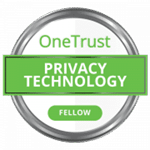Transforming How Your Children Use Technology

Sean Herman is the Founder and CEO of Kinzoo, a company that is on a mission to be the most trusted brand for incorporating technology into children’s lives. Kinzoo unlocks technology’s true potential by focusing on connection, creativity, and cultivating new skills and interests for children and families. Sean is also the author of Screen Captured, a #1 Amazon best-seller that provides new and productive ways for parents and families to think about technology and screen time.
Here’s a glimpse of what you’ll learn:
- Sean Herman reveals how his background in finance led to the development of Kinzoo
- How Kinzoo creates a safe and secure platform for children to interact with technology
- What are some of Kinzoo’s privacy and safety features?
- How can technology solve a technology problem?
- Sean’s tips for how parents can rethink their children’s relationship with technology
- How to manage your children’s screen time
- Sean’s advice for navigating parental controls
In this episode…
Are you a parent concerned about your child’s use of technology? Technology is becoming more and more accessible to younger children, so how can you ensure that your child’s content is safe and appropriate?
Kinzoo understands that it’s not always easy to restrict children’s technology use, so they’ve provided a secure alternative to traditional technology platforms to safely integrate and manage technology in your child’s daily life. With Kinzoo’s comprehensive and user-friendly privacy measures, you can feel confident knowing that your child is protected on the internet.
In this episode of She Said Privacy/He Said Security, Jodi and Justin Daniels sit down with Sean Herman, Founder and CEO of Kinzoo, to talk about creating a safe environment for children to use technology. Sean reveals some of Kinzoo’s privacy and security features, how the platform can help solve the growing technology problem, and tips for parents to rethink how their children use technology.
Resources Mentioned in this episode
- Kinzoo
- Sean Herman on LinkedIn
- Sean Herman on Twitter
- That Digital Dad Newsletter
- Screen Captured: Helping Families Explore the Digital World in the Age of Manipulation by Sean Herman
- Jodi Daniels on LinkedIn
- Justin Daniels on LinkedIn
- Red Clover Advisors
- Red Clover Advisors on LinkedIn
- Red Clover Advisors on Facebook
- Red Clover Advisors’ email: info@redcloveradvisors.com
Sponsor for this episode…
This episode is brought to you by Red Clover Advisors.
Red Clover Advisors uses data privacy to transform the way that companies do business together and create a future where there is greater trust between companies and consumers.
Founded by Jodi Daniels, Red Clover Advisors helps their clients comply with data privacy laws and establish customer trust so that they can grow and nurture integrity. They work with companies in a variety of fields, including technology, SaaS, ecommerce, media agencies, professional services, and financial services.
You can get a copy of their free guide, “Privacy Resource Pack,” through this link.
You can also learn more about Red Clover Advisors by visiting their website or sending an email to info@redcloveradvisors.com.
Episode Transcript
Intro 0:01
Welcome to the She Said Privacy/He Said Security Podcast. Like any good marriage we will debate, evaluate, and sometimes quarrel about how privacy and security impact business in the 21st century.
Jodi Daniels 0:21
I Jodi Daniels here, I’m the founder and CEO of Red Clover Advisors, a certified women’s privacy consultancy. I’m a privacy consultant and certified informational privacy professional, providing practical privacy advice to overwhelmed companies.
Justin Daniels 0:36
Justin Daniels here, I am passionate about helping companies solve complex cyber and privacy challenges during the lifecycle of their business. I’m the cyber quarterback helping clients design and implement cyber plans, as well as helping them manage and recover from data breaches.
Jodi Daniels 0:53
And this episode is brought to you by like The Quietus Tremeloes, total Monday, drumroll Red Clover Advisors, we help companies to comply with data privacy laws and establish customer trust so that they can grow and nurture integrity. We work with companies in a variety of fields, including technology, SAS, e commerce, media and professional services. In short, we use data privacy to transform the way companies do business. Together, we’re creating a future where there’s greater trust between companies and consumers. To learn more, visit redcloveradvisors.com. Monday, at Monday, you’re tired. Okay, you’re gonna kick us off?
Justin Daniels 1:33
I can, how should I kick us off?
Jodi Daniels 1:35
Who’s our special guest today?
Justin Daniels 1:37
Oh, I’ll introduce our special guests. So Sean Herman is the Founder and Chief Executive Officer at Kinzoo a company with the mission to be the most trusted brand for incorporating technology into our children’s lives. In 2019. He wrote Screen Captured to provide new and more productive ways for parents and families to think about technology and screen time.
Jodi Daniels 2:00
Welcome, Sean to the show.
Sean Herman 2:02
Thanks for having me.
Jodi Daniels 2:04
Absolutely. So we always like to start and understand how people came to where they are. So fill us in a little bit of how your career evolved to starting Kinzoo.
Sean Herman 2:15
Sure, yes, my path was a path. Less Traveled, I would say. Growing up, I didn’t have aspirations of being a tech founder, or an author for that matter. I had a long career actually in in finance and corporate finance. That’s my background, and my, excuse me my professional training. So for a number of years, I was just climbing the corporate ladder, working in Treasury and m&a and doing these sorts of things working with a lot of spreadsheets, the company that I was with, went into a merger, and the writing was kind of on the wall that it wasn’t going to be a good place to be even if we made it through kind of the the consolidation process. So at that time, I started kind of reaching out to my network and looking for opportunities. And also in my background, I’ve done a little bit of business analysis and project management for IT projects, but more on the business side on the finance side. So I came across a pretty unique opportunity to kind of run a startup for there were founders and there were investors, but they needed someone to run the day to day, this particular product was kind of a product looking for its place. As I was kind of looking for different use cases that we could find for the product, something interesting started to happen. My daughter actually became the super user of that product, which was really around moving video around in private networks. And we had just moved cities and she started using it to send videos back to her grandparents and some friends back in Calgary, where we moved from, and watch that for a little while, I didn’t think a whole lot of it. And eventually one day said, Okay, let’s find a tool that’s, you know, better and actually built for kids to do this sort of thing. And that’s when I surveyed the market, and there was only one product I could find on the market. And that came from Facebook. That was a non starter for me. And that led me to kind of see the opportunity. And feeling like there were probably other parents out there that felt the same way as I did. Who wouldn’t let my, you know, then seven year old anywhere near a Facebook product. So that led me to writing a business case for what became Kinzoo ended up getting funding and basically started the company and the product and that was back in 2018.
Jodi Daniels 4:41
As a former accountant. I love the transition from finance into entrepreneurship and technology is super interesting.
Sean Herman 4:50
Yeah, thank you. It’s certainly like the path less traveled. I think most tech founders tend to come from tech. I think there’s advantages of disadvantages, but Yeah, certainly when it comes to understanding the business and you know, the understand underlying business models and things like that, it’s certainly come in handy. Being able to work around spreadsheets and things like that as well. But yeah, if you asked me, you know, 510 years ago, if this is where I thought it would be, not a chance, but I’m glad to work out this way.
Justin Daniels 5:21
Why don’t we start about at the top? What is the Kinzoo? Mission?
Sean Herman 5:25
Yeah, you touched on it in the intro. So basically, Kinzoo’s mission is to become the most trusted brand for incorporating technology into our children’s lives. It’s a very carefully crafted mission. And I think the key words in there are incorporating technology. So which kind of speaks to our broader vision, which is the fact that kids are using technology. So it’s not a matter, I don’t believe it’s a matter of, you know, if they’re going to use technology, or when they’re going to use technology. But instead, it’s more important how they’re using technology. So it speaks to that. And then into our children’s lives, it’s very intentional, as well. We’re a group of parents and people with children in our lives that care very much about privacy and safety when it comes to children and kind of doing the right things when it comes to technology. And underlying, looking at the issue that I had. And Facebook making a product for kids, basically, was able to really rally a number of people around our mission and people that believe very much that there’s, there’s a real need here that needs and a very real problem that needs to be solved. But Facebook and big tech shouldn’t be the answer to it. And that’s something that we are trying to fill every day.
Jodi Daniels 6:40
So can you dive a little deeper into what Kinzoo is, how does a parent use this to help with the technology that their children are using?
Sean Herman 6:49
For sure. So Kinzoo is, it’s a messaging platform at its core. So basically, a Private Messenger and WhatsApp of sorts for kids. We try not to describe ourselves too much that way, we are very different at the end of the day, but but Kinzoo was, was built to be a messenger that basically connects children to the closest people in their lives. So basically, the main use cases around Kinzoo are connecting children to the parents, to grandparents to uncles, aunties, cousins, very best friends, and that sort of thing. So the messenger and the number of contacts that children are mentioned, interact with is quite small, controlled. But the the history behind the name Kinzoo is also important. So kin is kinship. So friends and family is what that speaks to. And then zoo as an analogy that we use often, which is when we go to the zoo, we let our children kind of explore freely. And we let them do that, because there’s the right structures in place to keep everything to keep everything safe, or the right structures in place to keep everything safe. And that’s basically the approach that we took to Kinzoo is we’re not trying to create an environment where every move the child makes is monitored and checked off and things like that. But instead, we really focused on privacy and security, by design to make sure that everything was designed with the proper guardrails in place. And most of what happens from the safety standpoint happens early on in the processes. So when parents actually sign on to the app, when they choose who the the children can connect with. And then what we’re trying to do is create that environment where children can, I have a little bit more freedom within the app to connect with people to to do other things in the app, whether it’s video calling or exploring creativity, creativity a little bit, we’ve built a number of tools for children do that, learn new things, we we’ve got something called a mechanism that we call paths in the app, which basically is a is a way for us to push different types of content to children that sort of educational slash entertainment based. So things like podcasts, things like we’ve worked with NASA on sharing images from the Hubble telescope. So there’s a lot of kind of going on inside the app. And it’s really built on that foundation of safety by design. So hopefully parents can. The ultimate goal of Kinzoo is if a parent looks over their children’s shoulder, sees them on on App sees the Kinzoo log where they’re gonna know that the children are in a good place. And that’s really what we’re trying to do.
Jodi Daniels 9:35
Can you share a little bit about what some of those safety features are that you built into the tool?
Sean Herman 9:41
Sure. Basically, the way that we well, I can back up and say before we wrote a line of code, there’s a great organization in the US called kidsave. The work out of California and basically they’re, they’re an expert in the Children’s Online Privacy Protection Act or COPPA. which is an act that kind of oversees all apps and games and everything else that’s directed at children, really with privacy at the core. So we’re able to consult with them and find ways to basically the things that we’re looking to do are when a parent signs up for the app, how do we prove that they’re a parent? How do we prove that they’re an adult. So basically, a lot of the onboarding workflow that we’ve built around around that. And then secondly, is when they set up a child account underneath that, it’s very important that the parent understands that type of information that children are going to be able to share personal information, and basically are made aware of all of that as well as consent to it. In the actual structure of Kinzoo. Kinzoo was designed to be data minimalist. So basically, we actually maintain a spreadsheet still have every single data point that we capture on both the parent user and the child user, every single data point that we capture, we have to justify why we capture that. And the way that we do that is actually justifying that, we capture that data point in a way that it’s going to benefit the user, or feed us with information to better you know, build out the service and understand what we need to do better. So basically, a lot of kind of what we did is, is really foundational and built in things that the user will probably not see at the end of the day. But really embedded in kind of the structure of Kinzoo the way that children connect with friends, basically, if you have two friends that want to connect, you need a parent or guardian on both sides to prove the connection. So it requires kind of a two way connection. And what we end up with is basically, a really strong foundation that’s kind of a sum of greater than the sum of its parts. And that’s basically what we ended up building with, with kidsafe is is almost a new way of kind of dealing with rental verification. What data that we capture from children, how we use that data. And again, it’s really built in a very data minimalist way, because we deal with children
Jodi Daniels 12:11
love all these friendly privacy terms. Thanks.
Justin Daniels 12:16
I guess the question I have listening to this is, how do parents figure out how technology can help solve a technology problem?
Sean Herman 12:25
Yeah, it’s a great question. I reflect back to, even with my own children growing up and the number of friends that I have, or people that have kind of seen over the years, what I often saw was, was basically technology was kind of this evil force, it was kind of always hanging above. So as the children are aging up, maybe they’re watching some YouTube or, you know, doing things like that. But in terms of getting into kind of connected technology, where you know, they’re starting to connect with other people chat with other people kind of move beyond pure consumption, it felt like technology was just kind of this, this thing that was hanging over the head, and eventually, one day, it was going to be allowed. But when it was allowed, basically, it seemed like the floodgates were kind of wide open. So it was like, Okay, you can have the Snapchat or you can have the, you know, nowadays we’d be talking tick tock, or whatever it might be. So, okay, fine, you can have the Snapchat account, but what I didn’t see a lot of is kind of parental intervention in that. So it was kind of hold it off as long as he can, but then when you’re gonna allow it, you, you know, tell the child to be safe. And the other way, what we’re trying to help build is better ways that parents can actually explore technology together with their kids. And I think that’s, that’s extremely important. So that starts with everything from sharing technology, we’ve built a number of experiences within the Kinzoo app that are gonna, what we hope they’re going to do is prompt a lot of conversation. So that can be everything from how do you set a password, the password to how do you detect, you know, possible grooming and things like that, and what to do about it. So I think what parents need to do, and I think the shift that I see happening is parents to kind of lean into technology and start using technology alongside the kids. And again, that kind of goes back to this realism that I think that’s out there is when it comes to kids, technology isn’t going anywhere. And there’s a lot of pressure, you know, coming from children to use it earlier earlier. At the end of the day, obviously, we are a tech company. And part of that is because we really believe in the potential of technology for kids. I think technology offers a lot of upside, but there’s obvious risks. And what we’re also trying to do as a company is can we really lean into the positive aspects of technology which we deemed to be you know, connection, creativity and cultivating skills and interests and being inspired and you know, things like that, but can we leave it To those who are stripping away the negative aspects, and that can be everything from, you know, privacy and data, targeted advertising, dark patterns, all of these sorts of things that that are being used. And typically what we see is adult platforms, and especially the big tech, the have gotten extremely good at, you know, two things. They’re, they’re meant to engage, engage us maximize engagement, and also to grow as quickly as possible. And there’s a lot of that that kind of bleeds into the design of the app. And when I started to see those patterns, kind of showing up in children’s apps, whether from big tech or others, that’s where I get pretty uncomfortable. So it’s a long winded answer. But I think at the end of the day, I think what we’re and what I’m actually seeing is more of our technologies really are asserting parents, taking the step of leaning into technology with their kids, learning what their kids want to use, but more importantly, why they want to use it. And I think we can understand that most of the motivation is a lot of the same things that I had when I was a kid in order to pay off friends and burn things and, and things like that. But there’s no doubt I think better solutions are still needed. But we are seeing, I think, a lot of positive movement there.
Justin Daniels 16:14
So it sounds like what you’re saying is, is we as parents have to really take ownership over working with our kids around what they’re going to watch who they’re going to connect with. Because I think we see far too many times you go to dinner, and you see everybody on their devices, and they aren’t speaking but having said that, if we want to deploy your technology, in some of the circumstances, you talked about it, parents really have to rethink how they associate with the technology and the kids. Do you have some thoughts on how we as parents need to rethink that?
Sean Herman 16:45
Yeah, I do. And yeah, that’s well said. I think that that’s exactly the case, I think. And I’m not, you know, I’ll never judge any any parent. And basically, I think technology, it’s very much up to the individual and the household and how they feel. And I don’t think there’s any right age for, you know, children to get onto a connected technology, or even YouTube or these sort of things. So I’ve got, you know, a four year old and 11 year old and absolutely, do we give them the iPads sometimes to give ourselves a little piece of credit? Of course we do. I think every every parent does. What I think becomes more and more important as we understand what they’re using, why, how it works, and what the motivations of that company are. So what I’m talking about, is his parents taking a little bit more of a role in thinking a little more critically, through technology through the platforms that kids are using, what are the motivations of the platform, ad driven platforms work for advertisers, not the user, they’re they’re going to work with the user in terms of like, how do we keep them on the platform for as long as possible, like being around as much as possible, and so we can show more and more ads. So I think there’s a minimum amount of kind of knowledge that we as parents should really learn and think about when our kids are using technology. And again, it’s not to say, all technologies that are your being a bad parent, if your electric kids on the iPad, like we all do these sort of things, but I think it’s really leaning in and just taking the extra steps of understanding. Again, speaking with your kid on why they want to use the platform that they do. A lot of times it’s very innocent, but also understanding as a parent, Are there risks involved with any particular platform? ROBLOX good example, millions and millions of kids use Roblox there is a chat function that we need to be aware of, there are ways to turn it off to manage it. So understanding why your child wants to use Roblox taking a look at what are the controls. And the good thing is most big platforms have very good parental controls nowadays. So really understanding those and how to manage and so when you think your child is ready for technology, I think that it’s very important to just speak through it. And from my own experiences, kids are very well to share why they want to use something, what they liked about it. And happy to kind of show you through the various aspects of the app as well.
Jodi Daniels 19:10
One of the challenges that people have is adult single food it is we’re addicted to these things. We want to use them all the time. What are your thoughts on maybe ways that parents can help manage screen time? If that there’s any features that you’ve seen or other options to help? Maybe even themselves? This challenge?
Sean Herman 19:34
Yeah, I dove into this subject quite extensively in my book, addiction. You know, addiction is a bit of a controversial word. So you know, we can say addiction or we can just say, you know, stickiness or whatever you want to call it, obsession or component with whatever it might be, at the end of the day. I say, our kids or we aren’t necessarily a addicted, the fact is these platforms have existed for, you know, 1520 years now, they have nearly, you know, perfected all of the patterns and using kind of our own brains, I’d say against this, but they really understand it, you know, the human condition and motivation and how to keep us connected on platforms. So, when we’re talking about bigger platforms, like you know, Facebook and to a lesser degree, I think we see tick tock and Snapchat and, and those but everything from you know, the Like buttons, kind of creating this competitive nature around followers and how many likes to buy post get, and tapping into the kind of human psyche as a way to kind of, again, they’re motivated as ad driven platforms to keep us on the platform for as long as possible. So they can show us the most ads and they’ve gotten extremely good at kind of gaming, the human condition to keep us on the platform for as long as possible. So what I think it’s important for us to know is hopefully recognizing that in our, in our own patterns, I think parents, I do talk about this a lot in my book, as well as oftentimes we’ll kind of see it parents scold a child for being on the iPad too much, then they kind of turn back to their own Instagram feed or whatever it might be. So I think leading by example, and also being being mindful of our own, you know, our own behavior when it comes to screens, because I think a lot of us would probably say, we spend more time on screens than then we think, or we would hope. So when it comes to children, I think, especially under the age of 13, which is where a lot of the regulation kind of is written for children under the age of 13, they kind of became a magic age, I don’t think it’s, I don’t think something magic happens to the child when they turn 13. But you know, that’s kind of a guidepost. But for any application that the terms of service will say for 13 Plus, so we’re talking about everything from Snapchat, tik, Tok, Instagram, you know, all of a lot of the bigger apps out there, they’re gonna have those patterns in them. And again, they’re ad driven platforms. So if we’re going to let our children on them, I think we need to be very much aware of that and have to watch the behavior of that child very closely. If children are using those platforms to connect with friends and family and things like that, I think that that’s, that’s okay. But what I’m watching for is, you know, are they are they putting up posts are things like likes and followers very meaningful to them? Those are kind of warning signs. And those are kind of the baseline of how the those platforms going to keep us really engaged or hooked, is, you know, putting up a post how many likes and getting hired to perform versus my last post? How do I do better next time? It’s a lot of that anticipation. So yes, I think at the end of the day, it’s parents understanding, you know, we’re susceptible to, and if we are going to open up those type of platforms that are household for, for younger children, or even on our children, tweens or teens. I think just understanding and again, hopefully having productive conversations with your children about what platforms are using, why they’re using it, and then just looking for those kind of warning signs of you know, it’s it’s heavily kind of curated, competitive kind of environment really getting to them. And that’s what I worry about a lot when it comes to kids, and especially in the light of research, and Francis Hogan and a lot of that sort of thing that there is evidence now that it’s starting to be there, there’s evidence that it’s detrimental to the mental health of youth, and far from proven, but I think where there’s smoke, there’s fire. And there are some really troubling things going on in terms of trends when it comes to you know, anxiety and depression and even suicide rates among among youth.
Jodi Daniels 23:51
Absolutely, you mentioned that many of the apps these days have parental controls. And I was hoping that maybe you could share a good privacy or security tip related to those parental controls that our listeners may not know about, and that they want to be paying attention to.
Sean Herman 24:11
Sure. The even at the operating system level. So whether you’re on Android or iOS, I think that there’s very good parental controls built in into that. Just anecdotally, I would suspect, probably less than than one of my parents actually uses those are really understands what they can do. When we hear, you know, terrible stories about children, you know, spending 1000s and 1000s of dollars in app and things like that. These Parental Controls can really manage that you can set up screentime boundaries per child and, and these sort of things. So even at the operating system level, I think that those are good. So a tip would be you know, parents understand and understand what those are, why they exist. How They work, it’s quite easy once you once you get in there, set up a child account for your child and basically set up the parental controls that you that you like. Aside from that, if you’re going to let your child onto platforms such as tick tock, tick tock does have good resources on on their website. So should children be using Tiktok? That’s, that’s an entirely different debate. Should any household decide that it’s okay, I’m okay with my child consuming some content, I don’t want them to post or, or things like that, if you visit the website. Of these companies, there’s extensive resources, they’ve had to kind of answer a lot of the the kind of questions around this. So I would say it’s, it’s really as simple as you know, educating yourself. If you’re gonna allow your child on on one of these platforms that do have some negative, there’s potential negative things going on, on the platform, to you know, as a parent go on and look at what resources are available, if there isn’t much available, probably question if that’s a platform for your child to be on. And then, you know, to get back to I think what we are seeing is more and more purpose built platforms like Kinzoo are starting to emerge, which I think is a good thing, I think there’s been kind of a widespread realization that, you know, like kids are using technology, and the tools that they’re using are very good. And in most cases, it’s back to that. Okay, I’m gonna let you on Snapchat, because there isn’t really anything else out there that it’s a quick and easy way for you to connect with friends, let’s say. So we are starting to see more and more platforms, like Kinzoo kind of emerge that are really built with the uniqueness of children at the core. And as I said, we’re hoping to be a solution. But for parents it, I would just say there’s a lot of resources out there good resources. And just to start to I know, we’re busy. But I think that’s part of the responsibility. If you’re going to open up, you know, these potential risks of the big platforms to get in and see what’s available to you and take advantage of the parental controls.
Jodi Daniels 27:08
Well, thank you so much for sharing. I know we’ll be going when when time, they don’t have access to all this.
Justin Daniels 27:14
So Sean, when you’re not out, advocating for children and technology, what do you like to do for fun?
Sean Herman 27:22
Oh, that’s a great question. Well, I’ve got an 11 year old and a four year old so my four year old is getting into all of the sports he’s going to get into at age so he’s, he’s you’ll see us on the soccer pitch and swimming and getting into skating and hockey later this year. So really excited about that. My Getaway is golf is and always has been. So I still get out once or twice a week, I’m able to get out and play some golf. And what’s great is even just on Friday night, my for my four year old. He’s loving golf. So he got to read the power card for the very first time. He drove around the course. But he also loves to come out and get the ball around. So we have a great time. So yeah, it’s a lot of fun that he’s able to kind of get out and we’re starting to Share, share, you know, golf together. And aside from that, yeah, I wish I had more free time. But yeah, just normal things like to hang out with friends, do things with the family and such.
Jodi Daniels 28:28
Oh, that sounds so lovely. We’re so grateful that you joined us today. If people would like to connect with you and learn more about Kinzoo, where should they go?
Sean Herman 28:36
So if they want to learn more about Kinzoo, it’s kinzoo.com is the website. I’m on LinkedIn. I’m also on Twitter @thatdigitaldad. I also publish a newsletter every other week, called That Digital Dad. And basically we just dive into kind of what’s topical in terms of children and technology. So people can feel free to subscribe to that. I’ve been doing that for over a year now. So I think it’s a great resource as well. Yeah, people can easy to find Twitter, LinkedIn would be the best place to find me.
Jodi Daniels 29:13
Excellent. Well, again, thank you so much for joining us. We really appreciate all the wonderful tips to try and continue to keep children safe as they use technology. Thanks so much.
Outro 29:26
Thanks for listening to the She Said Privacy/He Said Security Podcast. If you haven’t already, be sure to click Subscribe to get future episodes and check us out on LinkedIn. See you next time.














